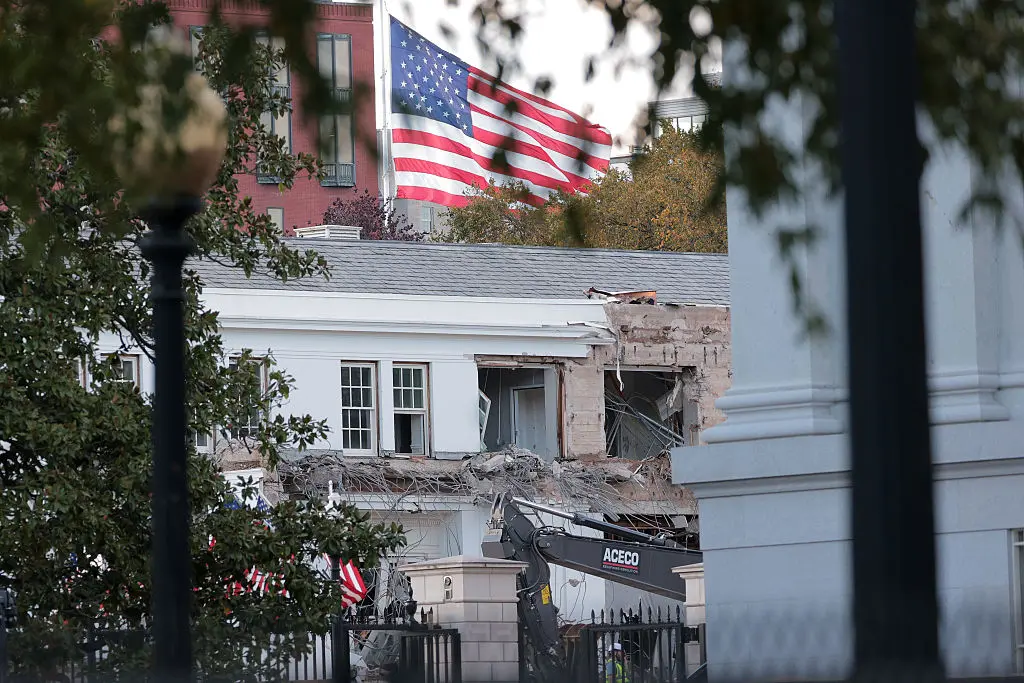The quiet order of Washington, DC, has been interrupted by the unmistakable roar of heavy machinery. What was once a quiet corner of the East Wing is now a construction site, where part of the structure is being partially demolished to make way for a proposed White House ballroom, a transformation few expected to see.
The space that once hosted the first lady’s staff, visiting dignitaries and tourists is being remodeled into something new. According to ReutersThe project is part of a broader modernization plan guided by the vision of President Donald Trump. This proposal calls for a grand ballroom, an architectural move that combines spectacle with controversy and may redefine how the White House houses power and prestige for years to come.
For decades, presidents have preserved, restored and even renovated the mansion. But the current project seems to go furtherwith the aim of replacing and reformulating it completely. A planned ballroom of approximately 90,000 square feet will rise where part of the east wing stood, a direct reflection of one man’s vision of grandeur. As reported by The Washington PostThe East Wing project has raised questions about preservation and purpose.
The east wing, built in 1902 and expanded in 1942, has been part of the complex for more than a century. It now faces a transformation that could redefine the look and function of the executive mansion.
Inside the demolition of the White House and Trump’s new vision
According to Getty Images, workers have been seen dismantling parts of the east wing façade. The proposed ballroom will cover approximately 90,000 square feet and accommodate up to 650 seated guests, far more than the current capacity of the East Room. The funding reportedly comes from private donors and technology companies, not taxpayer money.
Describing the project, President Donald Trump called it a long-held vision, a space worthy of major state and diplomatic events. The White House insists that the structure “present full respect” to the building’s heritage.
The sheer size and ambition make this a moment of architectural ambition as well as symbolism. Previous additions to the White House, such as renovations under President Harry S. Truman in 1952, were important. However, none compare to the scale of what is now underway. Preservationists have expressed concern that the demolition of the White House, even if it affects only part of the East Wing, could alter the historic integrity of the building.
History, identity and the place of the East Wing

The east wing took on its current form in 1942, primarily to cover an underground bunker and serve the offices of the First Lady. Before that, the 1902 additions and earlier renovations reflected the changing needs of the presidency.
In this context, what is happening now feels familiar and new at the same time. The White House has been modified by presidents of many eras to reflect the changing times. However, this demolition of the White House breaks with standard practice, because it essentially removes one wing and replaces it with a space built expressly for the show. Some historians, according to The Washington Post, note that previous renovations were aimed at preserving the building’s character rather than replacing entire sections.
The concerns raised are not just about preservation. Some ask: What does this say about the values behind the change? Others see it as a pragmatic modernization of a building intended to serve the public. Architecture is physical, but its meaning is even deeper.
Why change is important for the nation and its symbol

First, the movement propose a dance hall redefines the public face of the White House. A ballroom of this scale sends a message: gatherings will be larger and functions more elaborate. Rethink the residence not only as a home, but as a place of greatness.
Second, the use of private financing, rather than taxpayer resources, differentiates the project from previous expansions. It raises new questions about access, influence and transparency. Some lawmakers call the scale “elitist,” while supporters say it meets the needs of the nation’s role in global diplomacy.
Third, timing matters. At a time of national budget debates and institutional scrutiny, partially demolishing a historic wing to build a ballroom seems luxurious and practical. The tension between continuity and change, inheritance and innovation, is clearly visible.
Finally, the space being reinforced reflects modern expectations about what the White House should be and who it should serve. It remains to be seen whether it will become a legacy piece or a controversial symbol.
Featured Image: Getty Images
For the latest in fashion, lifestyle and culture, follow us on Instagram. @stylerave
Inauguration Day: Donald J. Trump returns to the White House after a rare political comeback [WATCH]



